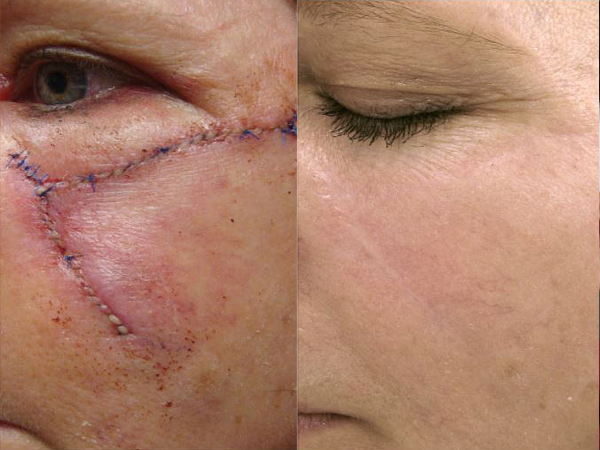Surgical Scar Treatment In Edmonton
At Albany Cosmetic and Laser Centre in Edmonton, we specialize in advanced scar treatment solutions for surgical, hypertrophic, and keloid scars. These scars can cause both physical discomfort and emotional distress, but you don’t have to live with them forever. Whether your scar is raised, red, itchy, or spreading beyond the original wound site, our customized treatment options aim to reduce its appearance, improve skin texture, and restore your confidence.

Surgical Scars Infographic Summary
Cost & Pricing
What To Expect
Mechanism of Action
Benefits & Results
Discomfort & Pain Level
Side Effects & Downtime
Visible Results After Surgical Scar Treatment
Clients typically see improved skin texture and a noticeable reduction in scar elevation and redness. Keloid and hypertrophic scars become flatter, smoother, and lighter with each session. Results vary based on scar age, skin tone, and individual healing response, but consistent improvement is our goal with every treatment plan.
Understanding Surgical Scars and Their Causes
Surgical scars develop as a natural part of the healing process after a skin incision. However, when the body produces too much collagen, it can form hypertrophic or keloid scars. These scars are often raised, itchy, and darker than the surrounding skin, sometimes extending beyond the original wound. Genetics, skin type, and wound care play significant roles in scar development.
Difference Between Acne Scars and Surgical Scars
Acne scars and surgical scars differ in both their cause and structure. Acne scars result from inflammation within the skin’s pores (acne), often leaving behind pitted or indented marks due to collagen loss. In contrast, surgical scars form when the skin heals after an incision, and they typically involve an overproduction of collagen, leading to raised or thickened tissue such as hypertrophic or keloid scars. While acne scars are usually atrophic (sunken), surgical scars tend to be more elevated and fibrous, requiring different treatment strategies for optimal results.
Surgical scar treatment targets the raised, discolored, or thickened tissue that forms after surgical incisions. At Albany Cosmetic and Laser Centre, we use a combination of CO2 laser therapy, corticosteroid injections, and microneedling to break down excess collagen, flatten raised scars, and blend the scar with the surrounding skin tone. Whether you’re dealing with hypertrophic scars that stay within the incision lines or keloid scars that extend beyond, our personalized treatment plans aim to improve texture, reduce discomfort, and restore a smoother, more natural skin appearance.
Complementary Services You May Consider
Alternative Services for Skin Concerns
If you’re exploring alternatives, treatments such as chemical peels, skin tightening, or Fotona laser therapy may offer complementary or alternative benefits depending on your aesthetic goals and scar condition.
Request Your Appointment Today
Request your consultation today and discover how our treatment can refresh your appearance.
Call us at (587) 520‑2835 or use our online booking form to schedule an appointment.
Read our privacy policy here